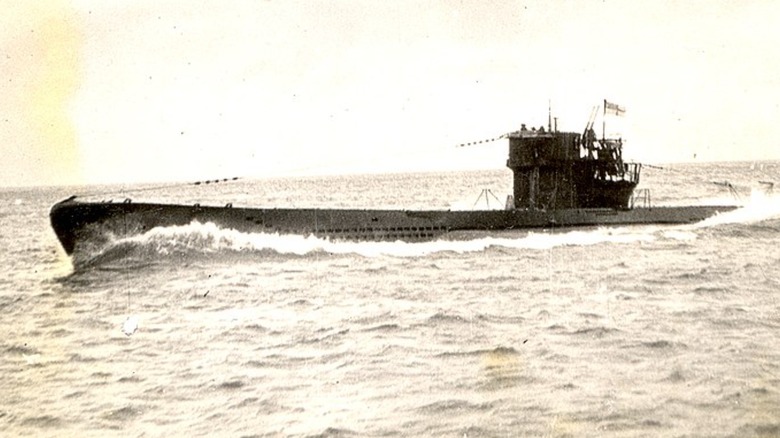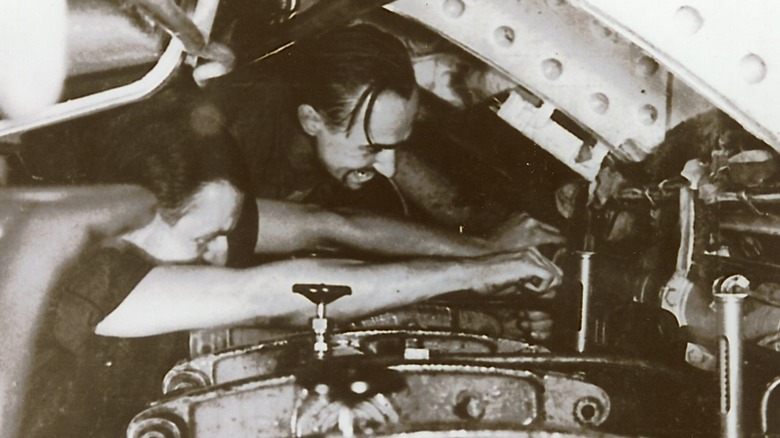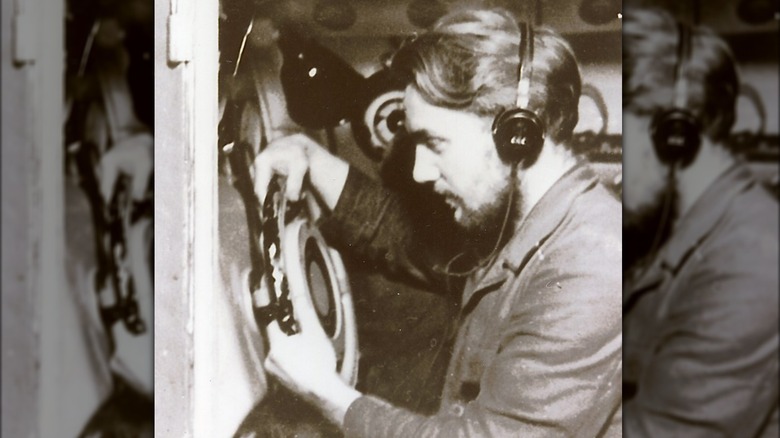The Wild Truth Behind The German U-Boat Sunk By A Toilet
Even the most efficiently reinforced vessel can have an Achilles heel in its structure. Remember in the first "Star Wars" movie when the Death Star was completely destroyed by a single torpedo that miraculously entered an exposed vent on its exterior? Maybe it was poor planing by the architect — or maybe it was just tactful screenwriting. At any rate, you can fully expect the unexpected to happen from time to time both in the movies and in the real world. Bottom line, even the most state-of-the-art structures of industrialism are known to take a dive from time to time.
World War II introduced some of the most innovative and era-defining wartime technology that changed both the military realm and everyday life for good. Penicillin, jet engines, radar, and electronic computers were just a few of the major revolutionary technological upheavals that took center stage during the global conflict (via History). However, even the boldest gestures in industrial progress come with an inevitable stage of trial and error. In the case of a German submarine u-boat, the error resulted in embarrassment and fatality. According to The Scotsman, U-1206 reportedly was destroyed of the coast of Scotland, but not by a depth charge or other explosive. It was a lavatory malfunction.
What happened to U-1206?
It all started when 27-year-old Karl Adolf-Schlitt, the submarine's captain, took a trip to the bathroom that ended quite poorly. At the time, most submarines were using a simple septic tank solution to store human waste while the vessel was out at sea, but the architects of U-1206 had devised a disposal system that expelled septic matter directly into the ocean through a system of chambers and pressure funnels. The idea was to "relieve" the ship from carrying an unneeded surplus of weight. After finishing, Schlitt was having trouble with the flushing process, so he called for some help (per History of Yesterday).
One of the U-boat's engineers came to Schlitt's assistance, but after turning the wrong valve, all hell broke loose. The tiny bathroom soon turned into a giant toilet when the plumbing system backed up, and before they could process what was happening, the crew was knee deep in ocean water and sewage. As the mixture spread throughout the ship, the u-boat's battery compartment became submerged and started to malfunction. Chlorine gas started seeping into the boat's interior, so the crew had to act fast (via The Scotsman).
U-1206 takes a one-way dive
U-1206's crew started scrambling for a solution as the excess of ocean water and human waste continued to flood their environment. Captain Schlitt ordered the boat's torpedoes to be fired to lighten the load so the sub could reach the ocean's surface faster. Finally, they breached the divide between ocean and air, but were soon spotted by enemy combatants circling overhead, who opened fire on the damaged vessel. The captain ordered the submarine scuttled; the crew abandoned ship. Four crew members drowned and several others managed to make it as far as the coast, about 10 miles from the site of the U-1206's untimely end, before they were captured and taken into Allied custody (per The Scotsman).
Captain Karl Adolf-Schlitt's official statement before the court was as follows: "I was in the engine room, when at the front of the boat there was a water leak. What I have learned is that a mechanic had tried to repair the forward WC's outboard vent. I would say — although I do not have any proof — that the outer vent indicator either gave false readings or none at all." There really isn't much evidence at hand to determine exactly what happened aboard U-1206, so historians, as often happens, are relatively at odds with one another (via History of Yesterday). Captain Schlitt survived the war, dying in 2009 at the age of 90.


